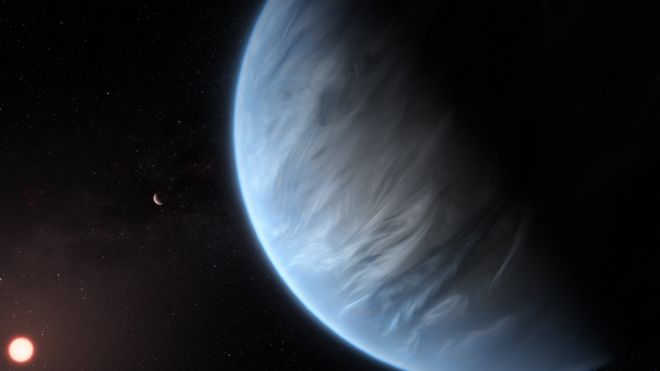The New World?
Have you ever wondered what will happen to us in millions of years? What if the existence of humanity will become uninhabitable on planet Earth. Will there be no place to go? Or what if Earth is just like a living organism that has a certain age limit and eventually will start to self-destruct? There might be an answer!
Thanks to scientists, and technology humans have developed over time, a new planet was detected. On Wednesday, September 11th, astronomers discovered a “world” with a habitable zone and a source of water. Discovery of water vapor and clouds offers the possibility of sustaining life. Water is essential to the survival and continuation of humanity. It provides a faster blood oxygen circulation, regulates body temperature, and generally, is a key to the proper functioning of organs.
The planet, K2-18b, was discovered during the extended second mission of the Kepler* space telescope. It is a super-Earth, about 111 light-years away and was not easily found at first, due to multiple failures of the telescope’s pointing parts. However, NASA figured it out and added more powerful optics.
K2-18b is very unlike our world, and an adjustment would be necessary. It’s more than eight times the mass of Earth, meaning surface gravity is much higher, which means it will be difficult to complete daily activities done by humans, such as traveling.
Many scientists believe K2-18b is not a habitable planet, because it does not have a solid surface. In addition, the atmosphere is mostly filled with hydrogen and helium compared to Earth, having anywhere between 1% and 4% of water vapor. However, it is the only hope and can be considered as our plan B planet. “This is the only planet right now that we know of outside the solar system that has the correct temperature to support water, has an atmosphere, and has water in it—making this planet the best candidate for habitability that we know right now,” claims Angelos Tsiaras, an exoplanet scientist from University College London and the lead author of The Nature Astronomy study. It is the first exoplanet (a first planet outside of our solar system) that might be a key to the saving humanity, and it gives aspiration and motivates astronomers to explore more significant unknowns. Likewise, the presence of water particles indicates that water is likely to exist in other planets near it, making this planet a top priority and worth observation.
Furthermore, the location of K2-18b creates several features for better detection. Its size, compared to its host star, allows a more substantial fraction of the starlight to pass through the atmosphere on the way to Earth, when it is between the star and us. Also, it has a short orbit, so multiple observations of the atmosphere can be obtained in just a few years. Despite its possible “flaws” and inhabitability, it still provides us with valuable information. K2-18b should be considered very seriously, because it could the key to the future of humanity.
*Johannes Kepler (1571-1630) was an astronomer and mathematician who discovered that planets and other objects travel in elliptical orbits around the sun. His works and achievements serve a foundation of today’s astronomy and cosmology.











